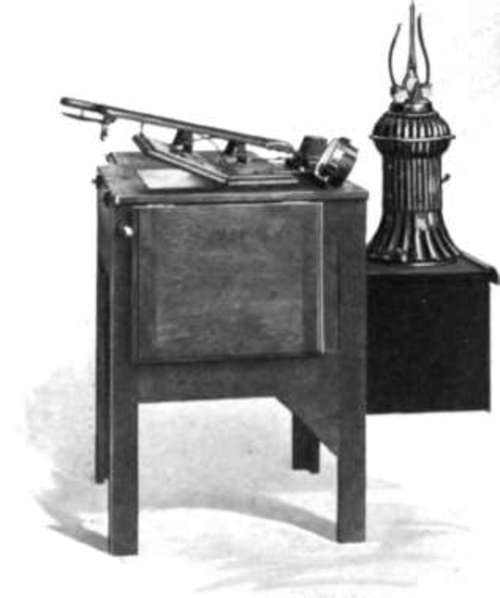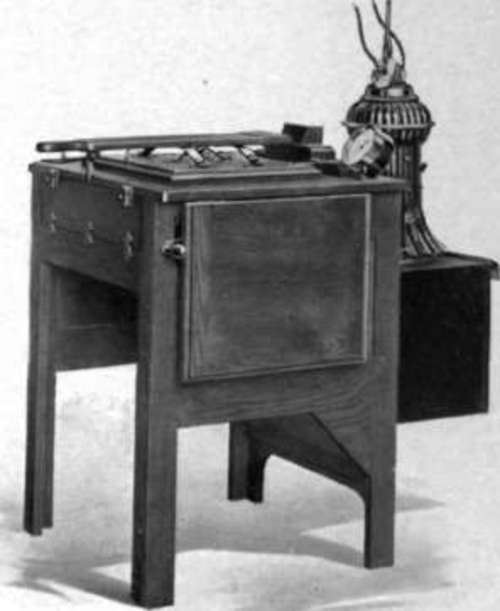Artura Method Toning
Description
This section is from the "Studio Light Incorporating The Aristo Eagle - The Artura Bulletin 1911" book, by Aristo Motto. Also see Amazon: Studio Light Incorporating The Aristo Eagle - The Artura Bulletin 1911.
Artura Method Toning
The Artura-Method Sepia Process is the one process that is enabling photographers to introduce individuality into their work on developing paper.
No other process for producing Sepias on developing paper enables the operator to produce, at will, any tone from a beautiful warm black to a rich sepia closely resembling a Platinum Sepia in color.
With this method the toning action is uniform over the entire print and the toning action can be stopped at any desired point. With other methods for producing Sepias on developing paper the half-tones of the print are acted on first and the print must be left in the bath until the entire silver image is sulphurized or the print is worthless.
We are in receipt of many favorable letters from photographers who claim that the Artura-Method of producing Sepias is the best thing that has ever been introduced.
Below we are giving a few notes on the process that were not published with the formula in the September issue of Studio Light.
Notes
It is necessary to have the water at boiling point when the hypo and alum are being mixed. The other ingredients must be added at lower temperature.
The toning bath should be about neutral. This can be determined by testing with litmus paper.
Do not begin toning at a lower temperature than 120 degrees.
In toning the prints the bath should be kept at a temperature ranging from 120 to 125 degrees.
If the bath is too cold the gold tone will predominate; if too hot, the sulphur tone will predominate.
To determine when the prints have been toned, examine by transmitted light, and when all black has been removed from the deepest shadows it is safe to assume that the final color has been obtained.
Give prints several changes of water to remove any sediment.
Return prints for five minutes in regular fixing bath.
Wash in the regular way.
The entire lot of prints should be placed in the bath at one time, keeping them well separated during the process of toning.
In toning a small number of prints, mix a small quantity of bath, preserving the same proportions as in formula.

A New Artura Printer
The distinct advantages of the Artura Printer are in a large measure due to the fact that it has been designed by practical developing - out paper printers who know the essential points of a machine for this work, and is manufactured by skilled mechanics who are thoroughly familiar with the needs of the profession.
The new model Artura Printer has all the advantages of the former model with added conveniences and improved construction and appearance. The special pattern of Copper Case Arc Lamp is wound to our specifications in order to give the finest quality of printing light. It uses small carbons, giving a much more steady light than the ordinary arc lamp and uses a minimum of current.
The top of the machine is fitted with a hinged frame containing a sheet of plate glass 12 3/4 xl4 3/4 inches on which the negative to be printed from rests. This frame may be raised to adjust a vignette or pieces of tissue used to hold back any portion of the negative in printing. A ground glass which slides in a groove directly underneath diffuses the light and is a support for the vignette or sheets of tissue.

Artura Printer - Back Partly Lowered.
The hinged back is similar in appearance to that of a printing frame but is so controlled that the back half comes in contact with the negative first. This allows the printer to place the paper on the negative and hold it in position with the hand until the back is in contact with the paper. The hand may then be removed and the entire back brought in contact by pressing-down on the handle until it automatically locks. The back is padded with fine soft felt and is adjusted automatically for various thicknesses of negatives and paper.

Artura Printer with Print in Contact.
The exposing shutter is opened and closed by moving the small metal handle on right side of the machine, the shutter of orange material being in the back of the cabinet directly in front of the light box. This gives plenty of good orange light when the shutter is closed, allowing the paper to be placed where desired before exposing.

By Gertrude Kasebier. Nero York, N. Y.
The cabinet has a 14 x 17 drop leaf at either side to hold the paper and exposed prints and occupies only 24 x 37 inches of floor space. It is constructed of oak and is handsomely finished in Flemish oak stain, waxed.
This printing machine combines simplicity with rapid, easy manipulation and, once used, will be found indispensable.
Continue to:


